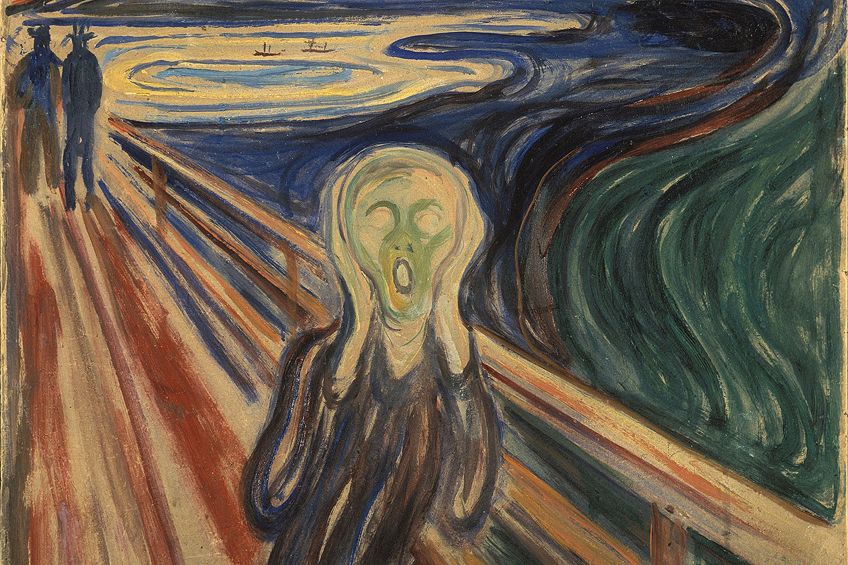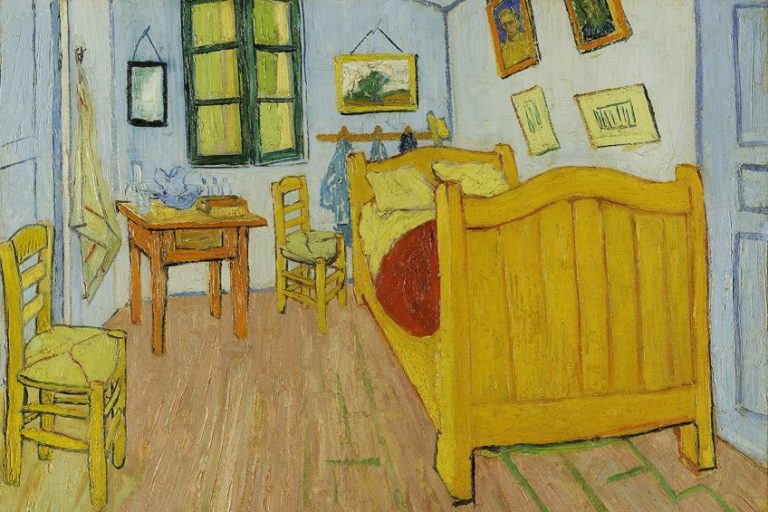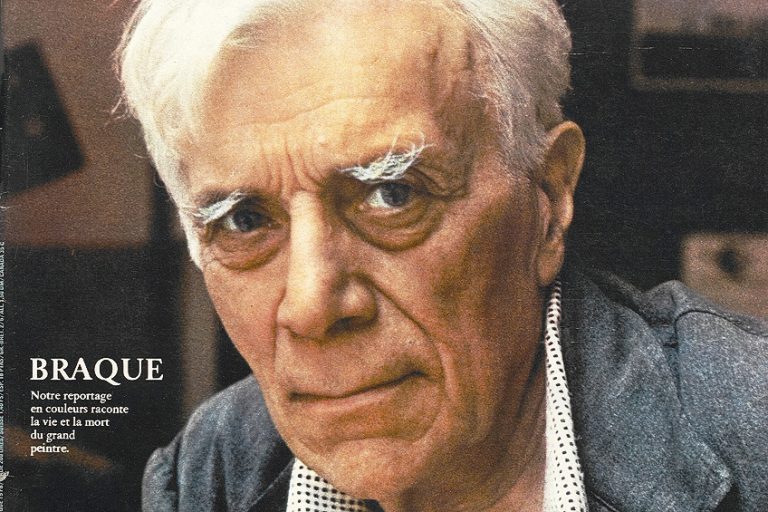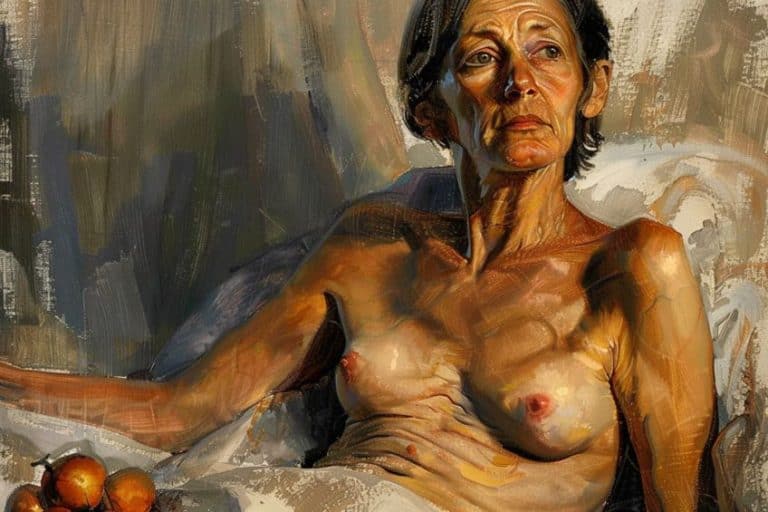Edvard Munch Paintings – Looking at Edvard Munch’s Most Famous Works
It is both a blessing and a curse to have created such a well-known work of art. On one hand, it allows you to become an artist that is renowned globally, but on the other, it can sometimes overshadow the rest of your artwork. Edvard Munch’s most famous work The Scream is an image that is easily recognizable in the public consciousness, yet Munch was an extremely prolific artist and created many other art pieces throughout his lifetime.
A Brief Introduction to Edvard Munch
Edvard Munch was born in the village of Ådalsbruk in Norway, on the 12th of December, 1863. His youth was said to be plagued with sadness and stress due to illnesses and the looming fear of having been passed down by a genetic mental disease.
Under the encouragement of Hans Jager, he started living a carefree life, urging Munch to express his own mental and emotional condition. Munch’s particular style arose as a result of this.
Edvard Munch then went on his travels abroad which came with the inevitable exposure to new sources of inspiration and forms of expression. In France, his concept of color would be largely influenced by the masters such as van Gogh and Gauguin. With the success of his painting The Scream, Munch became a well-known name in the art world and went on to create an immense body of work.
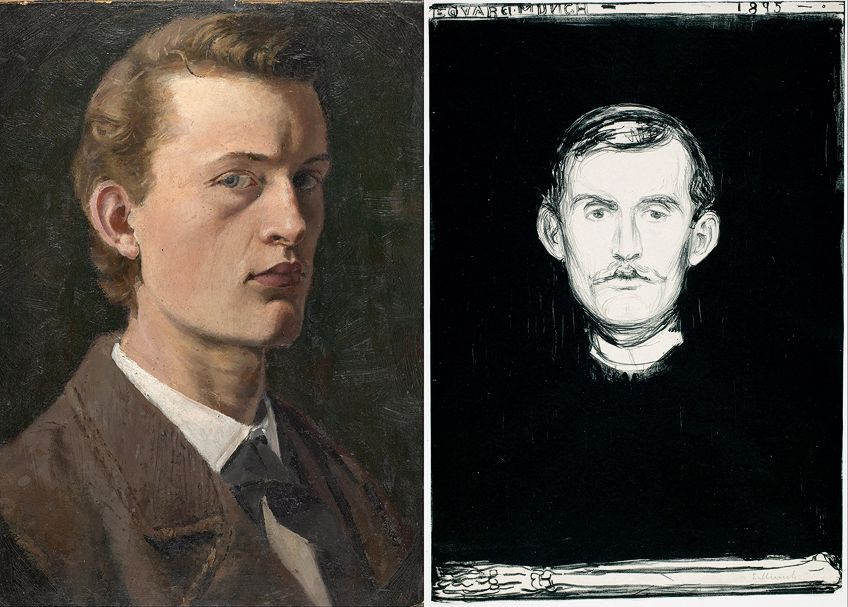
Despite gaining much wealth and fame, he was a reclusive figure who stayed unmarried and thought of his artwork as his own children. The last three decades of his life were spent in isolation at his home near Oslo.
There he continued to work, building up a huge collection of thousands of drawings, paintings, etchings, lithographs, woodcuts, and many more works of art which were discovered by authorities in 1944 after he had died at the age of 80.
The 10 Most Important Edvard Munch Paintings
It would be hard to talk about Edvard Munch paintings without mentioning The Scream. However, it would be wrong to assume that the artist was a one-hit wonder that never created anything else. In fact, Edvard Munch’s landscape paintings and portraits are equally revered. To get a picture of the full scope of his work, we will be looking at not only Edvard Munch’s most famous work but many other examples too.
The Sick Child (1885)
| Dated From | 1885 |
| Painting Dimensions | 121 cm x 118 cm |
| Medium | Oil on Canvas |
| Currently Housed | Tate Gallery, London |
This sorrowful painting is one of Edvard Munch’s first works and is regarded as an advancement by the artist for establishing the style for his formative years, which focused on mortality, grief, anguish, insanity, and obsessions of a broken mind. The picture, dedicated to his departed sibling Johanne Sophie, portrays the sick teenager with a mourning lady alongside her, the woman most likely a depiction of Munch’s mother, who had died of TB a decade before his sister.
Over the course of more than four decades, Munch revisited this extremely harrowing experience in his work, producing six finished canvases and several explorations in multiple mediums.
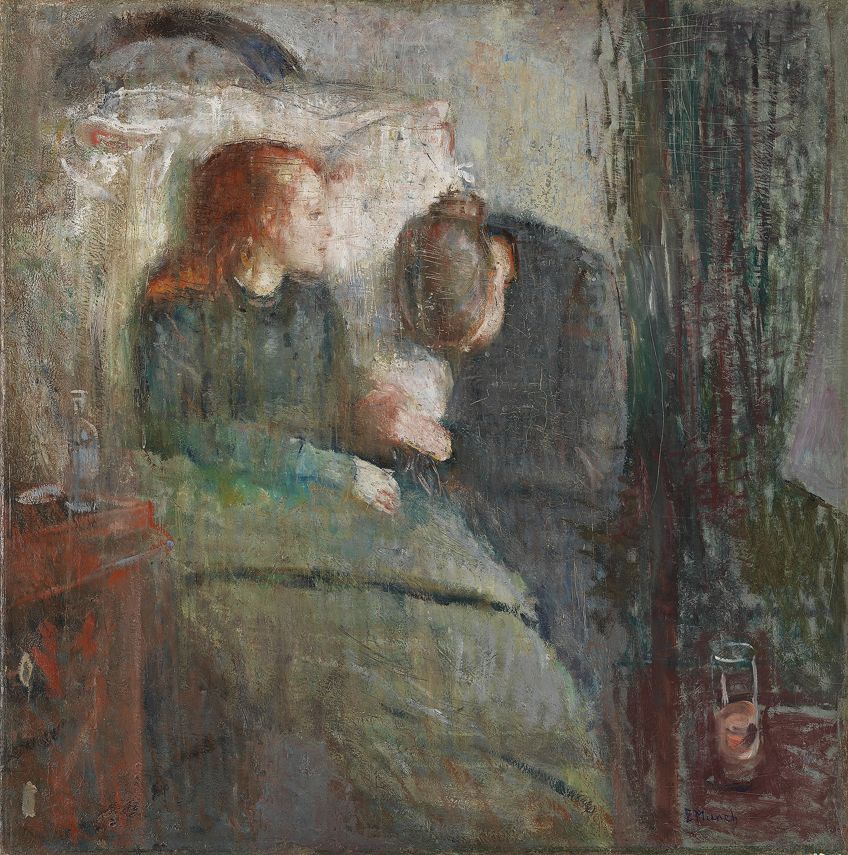
Sophie is seated in a recliner, clearly in agony, supported up by a huge white cushion, staring at gloomy drapery, most likely depicted as a metaphor of mortality, in all of the painting variations. She is seen with a haunting face, holding hands with a bereaved elderly lady who appears to want to console her but has her head lowered as though she is unable to bring herself to look the teenage child in the eyes.
Night in Saint-Cloud (1890)
| Dated From | 1890 |
| Painting Dimensions | 35 cm x 26 cm |
| Medium | Oil on Canvas |
| Currently Housed | The National Gallery, Oslo |
In 1890, while residing in the Parisian neighborhood of Saint-Cloud, Munch produced Night in Saint Cloud. He resided in France from 1889 to 1891, sponsored by a Norwegian government artist’s grant. Munch went to St. Cloud, Minnesota, after a plague of cholera spread out in France in December 1889. There, he leased the level above a bistro with a breathtaking view of the Seine River. If one were to regard The Sick Child as a heartfelt homage to his beloved sibling, this picture is a considerably more complicated and harsher monument to his dad, who passed the year before.
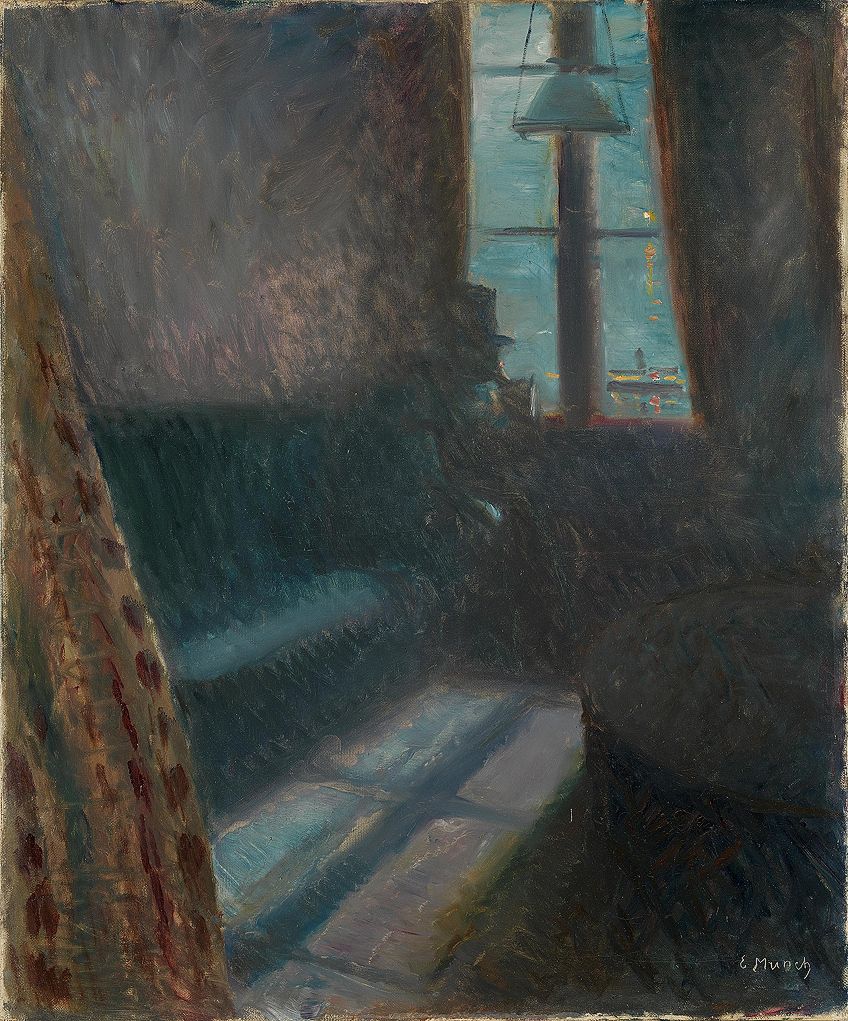
His usage of the curtains in this Night in Saint Cloud exercised a trompe-l’oeil technique that had been used by a multitude of the Great Masters as a means of attracting the audience into the canvas, referring to the scene’s artifice, and also highlighting their unique ability to paint something that is as true to life as the fabric that has been hung in front of an artwork. This artwork likewise displays the direct effect of Post-Impressionism, a movement that consisted of numerous portraits of lone individuals or vacant interiors as reflected in this piece.
Munch’s homage to his dad consists of a gloomy, apparently sacred area drenched in nocturnal light, a space filled solely by shadow and quiet.
Death in the Sickroom (1893)
| Dated From | 1893 |
| Painting Dimensions | 150 cm x 167 cm |
| Medium | Oil on Canvas |
| Currently Housed | The Munch Museum, Oslo |
Munch was a year her junior when his sister succumbed to TB at the age of 15, but in this picture, he depicts himself and the entire family as they would have been nearly two decades later. Johanne Sophie is virtually invisible as she sits in the tall recliner next to the bedside. Her family is strewn around the space: two girls are in the forefront, with Munch next to them, moving towards the bedside, while his aunt and father are near the bed. However, brother Andreas appears to be attempting to flee the cramped space.
Everyone is on their own. None of them are looking at or talking to one other; they are engrossed in their own sorrowful world.
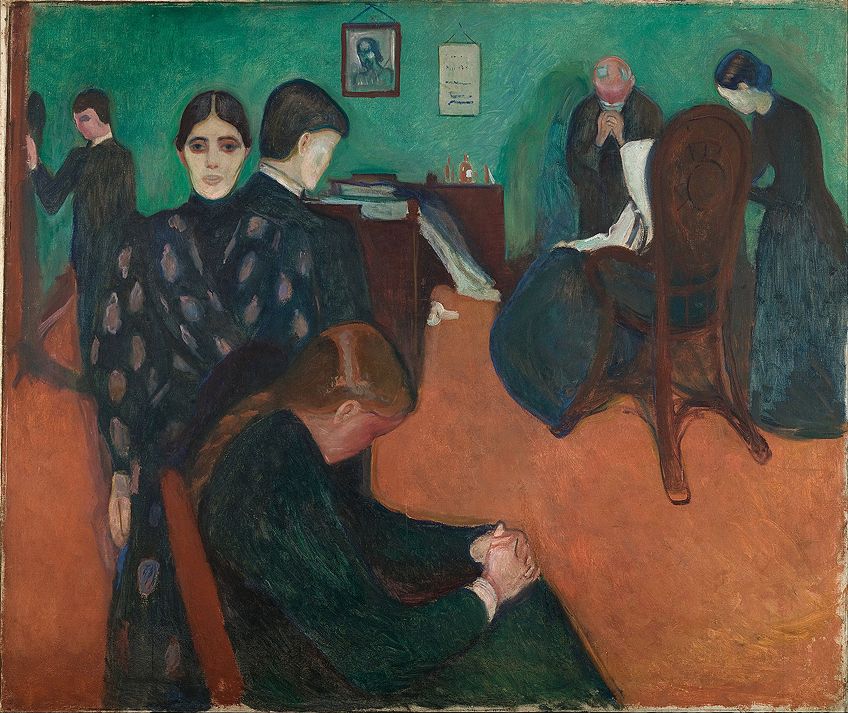
Laura, the younger sister, sits in a despondent mirroring of her elder sister’s stance, her head bent; the father gazes directly forward, his hands joined in meditation; and then another sibling stares directly out of the painting, forming a type of emotional symbol like many of his figures. The setting is basic and severe, with an orange and red floor and turquoise partitions splitting the image horizontally, and individuals in greyish-blue clothing scattered across it, with a major emphasis on a set of females in the front.
The color palette is quite limited, especially in comparison to other of Munch’s works; this may symbolize the closure of other sentiments by sadness or just the habit of wearing black garments for grieving.
The Scream (1893)
| Dated From | 1893 |
| Painting Dimensions | 91 cm x 73 cm |
| Medium | Oil & Tempera |
| Currently Housed | The National Gallery, Oslo |
Edvard Munch’s most famous work, The Scream is perhaps the most famous figure in the history of Western art, trailing only behind the Mona Lisa. The figure’s ambiguous, oddly shaped skull, extended limbs, huge eyes, flared nostrils, and elliptical mouth has become part of our cultural memory; the whirling blue environment, particularly the flaming yellow and orange sky, has sparked a slew of ideas about the scenario represented.
The artwork’s subject matter aligns with Munch’s concern on topics of partnerships, living, dying, and fear, and there are numerous interpretations of the artwork that reflect the artist’s inventiveness and interest in playing with the choices available across a variety of mediums.

Despite its fame, The Scream is a remarkably basic piece in which the artist used the fewest shapes capable of achieving the greatest emotion. The bridge fills the forefront at a sharp angle from the midline on the left; a scene of coastline, lakeside or fjords, and hillsides; and the air, which is active with curved lines in hues of yellow, orange, red, and green-blue. The poetic contours of the hillsides flow over the skies, blending the depth of field together. The bridge separates the human figures from the surrounding environment. Its rigid uniformity contrasts sharply with the forms of the countryside and the skies.
The technical accuracy of the bridge is represented by the two faceless erect beings in the backdrop, while the contours of the foreground figure’s head, hands, and body mimic the curving contours that characterize the landscape.
Anxiety (1894)
| Dated From | 1894 |
| Painting Dimensions | 94 cm x 74 cm |
| Medium | Oil on Canvas |
| Currently Housed | Munch Museum, Oslo |
This artwork is inspired by two previous departures: the apprehensive humanity rushing ahead as though propelled by frightening forces of nature, and a particular vista of Oslo Fjord, which was previously seen in The Scream.
Both were bound to reappear with great regularity in not only this painting but several other pieces from the same era.
Norwegian angst, similar to its German contemporaries, was becoming the defining term not only for Munch’s crucial pictographic subject matter, but also for the whole custom that can be linked back to Nietzsche and Kierkegaard’s ideologies, the plays of Ibsen and Strindberg, and the contemporary aesthetic contributed by Northern Europe overall.
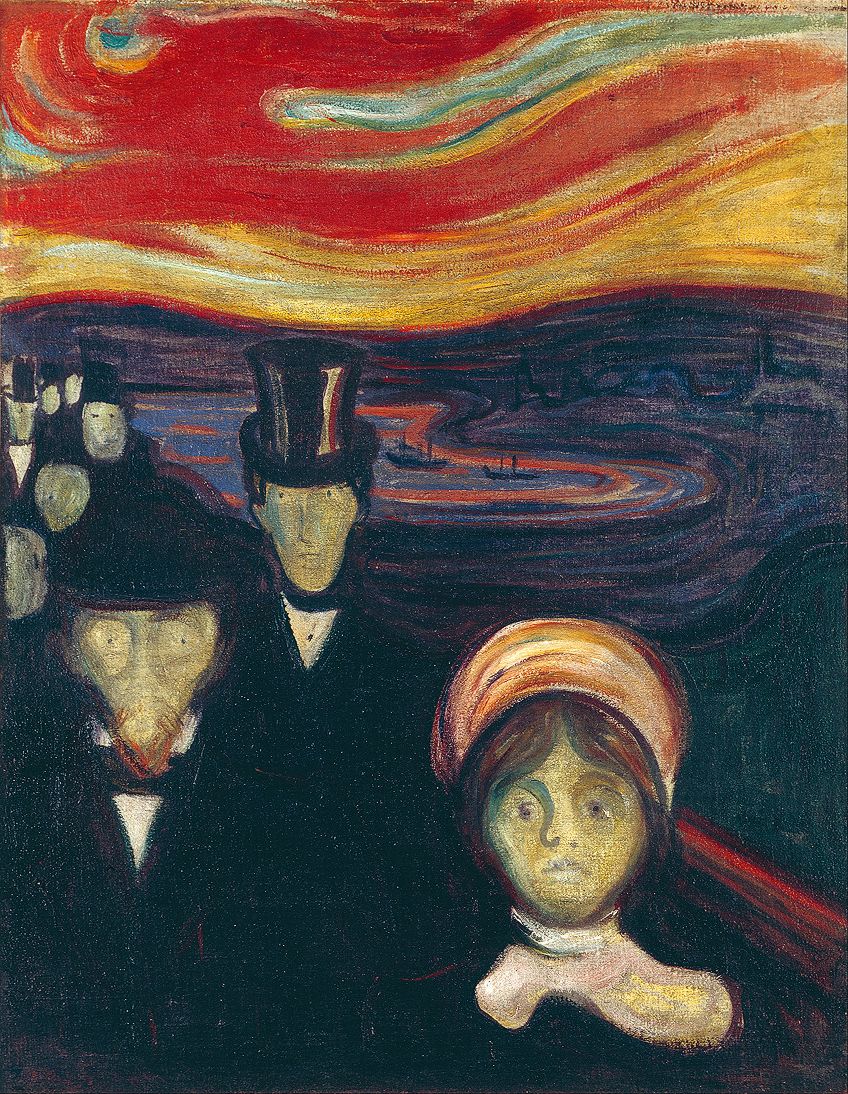
Many aspects of The Scream are repeated in Anxiety. The same dock that housed a solitary detached individual reappears, as does the water in the background, the two vessels, the chapel, and other buildings that border the coast, albeit a bit less darkly. The somber colors and strong swirls of circularly increasing patterns that delineate and eventually envelop the sky, sea, and land are all lifted from the older work. Anxiety, on the one hand, plays on communal misery, whilst The Scream dealt with anguish experienced in absolute solitude by a lone human.
The agony in this piece is more persistent, albeit less penetrating than in “The Scream” because the despair is carried by a community instead of a solitary person.
Ashes (1894)
| Dated From | 1894 |
| Painting Dimensions | 120 cm x 141 cm |
| Medium | Oil on Canvas |
| Currently Housed | National Gallery of Norway |
This piece rates high in Munch’s repertoire in terms of pure elegance. It highlights the impact of French synthetist artists as a frozen diorama of the mind. However, its softer outlines, which are occasionally duplicated, rich gloomy hues, and absence of primitivist visual style give it vitality and mood not often encountered in their works.
When lovers are devoured by the intense flame of desire, their love is turned to ash. That is unmistakably the message implied by the title.
The scene’s components, on the other hand, imply a more unclear and nuanced content. The couple has parted after their sexual contact has ended. The male crouches in sadness or terror in obscured perspective, while the lady stands straight and facing the front, her white dress not yet fastened up to cover her seductive crimson underwear.
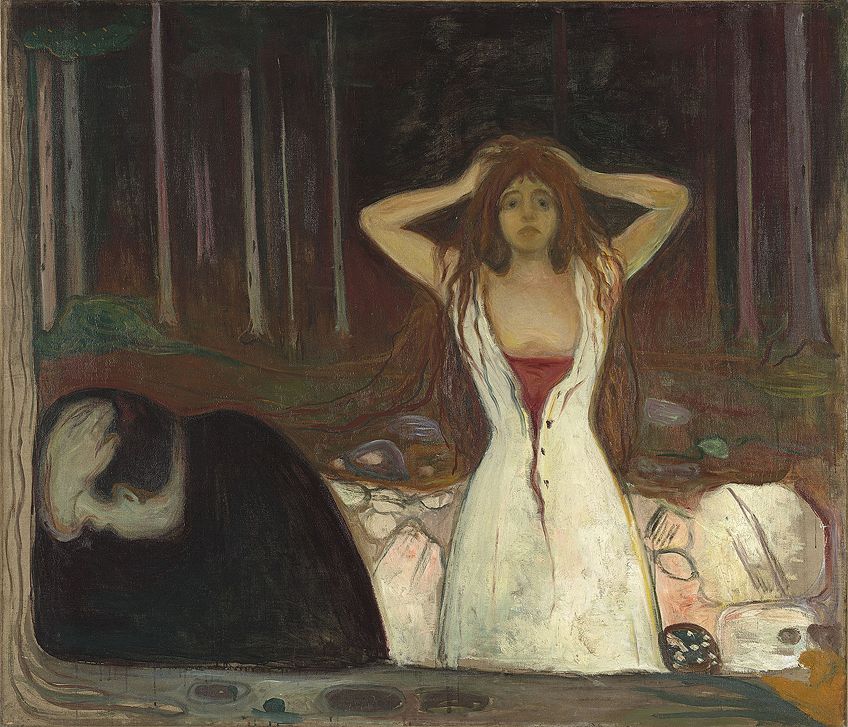
She adjusts her tresses, whose streaming locks still lay on the man’s shoulders, creating the curve of his head and demonstrating her continued dominance over him. The horizontal shape at the base, coupled with the vertical boundary on the left, with its rippling, maybe flame-like patterns, is the most intriguing. These components might be designed as a figurative boundary, similar to the one utilized in the Madonna. He described another painting as “the woodland that takes its sustenance from the deceased.”
If this is taken as a hint, this boundary depicts a flow of spermatozoa absorbed by a tree, the next recipient of death following love in the cyclic processes of biological longevity, according to Munch’s philosophy.
Madonna (1895)
| Dated From | 1895 |
| Painting Dimensions | 91 cm x 70 cm |
| Medium | Oil on Canvas |
| Currently Housed | The National Gallery, Oslo |
Madonna is among the most controversial pictures in Munch’s profoundly psychologically driven work, with a sensual figure drifting inside a deep-red frame full of wriggling seminal fluid and, at the bottom left, a grotesque embryo. While the title hints at a profane allusion to the Virgin Mary, the artwork’s dreamy apparition juxtaposes that conventional Religious subject with other, more frightening feminine images of the sort he frequently explored to create his subjects of yearning, envy, fear, and mortality.
He developed a contemporary technique incorporating pulsing bands of color, often contrasted by black, to intensify the energy in his works of art.
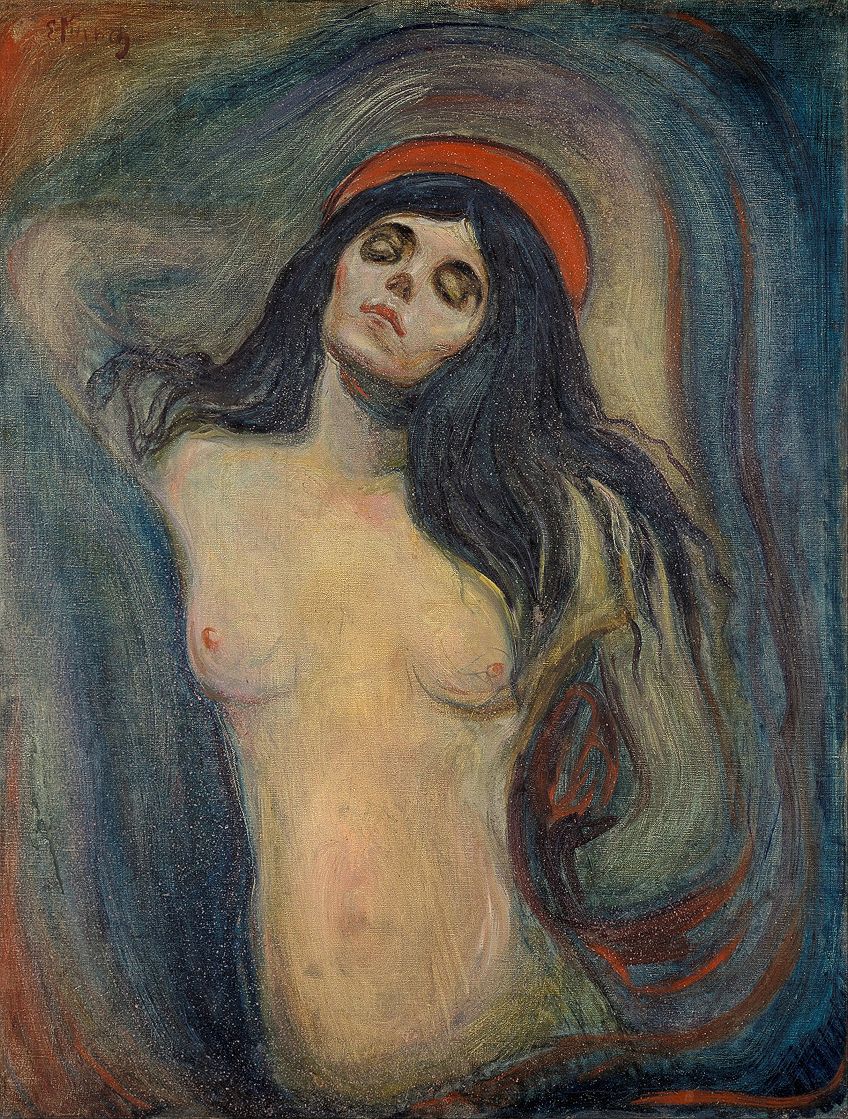
Munch’s art was influenced by his life experiences, which included problematic relations with girls and a youth devastated by the loss of his mom and siblings. So was the cultural environment of the 1890s, when social conventions and women’s perceived social positions were on the verge of major shifts, and the prospect of more sexual liberation was often laced with trepidation.
He reveals his thoughts on the fundamental links between joy and risk, death and life.
Madonna is the final “moment when the universe ceases rotating…. Your mouth, as crimson as ripe fruit, gradually separates as though in anguish,” he wrote. “Death’s hand has now reached out and touched life. The connection between the thousand families who have died and the thousand coming generations have been crafted.”
Puberty (1895)
| Dated From | 1895 |
| Painting Dimensions | 151 cm x 110 cm |
| Medium | Oil on Canvas |
| Currently Housed | The National Gallery, Oslo |
Suffering, fear, and grief are recurring themes in Munch’s work, but maybe rarely are they more effectively combined than in Puberty, a depiction of youth and loneliness. The solitary and isolated female form represents a condition of erotic melancholy and dissatisfaction, both of which tormented the painter during his life, whereas the girl, despite her seeming shyness as judging by her stance, suggests quite the contrary through her open look.
If it isn’t her own emerging character, the towering darkness behind the person suggests the emergence of an unpleasant and conscious monster, maybe one tormenting her chamber.
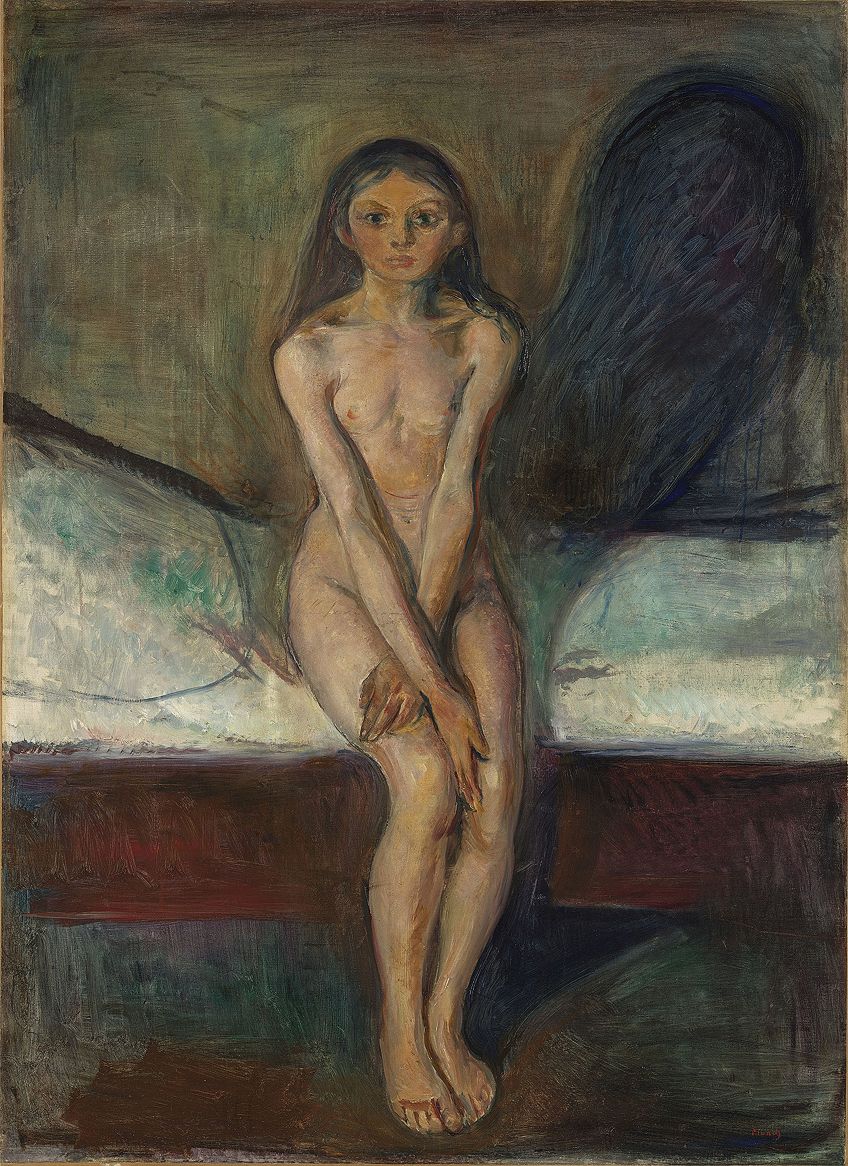
Munch’s work retains many of the visual qualities of Post-Impressionism at this time, but it is distinguished by a significant dose of the symbolic. He is creating what he senses in front of him, not particularly what he observes with his eyes. Munch was known for painting from imagination rather than reality, but the unusual detail of the female’s torso – particularly the clavicle – is seen by many to indicate that, at least, in this case, Munch used a real figure.
The Kiss (1897)
| Dated From | 1897 |
| Painting Dimensions | 99 cm x 81 cm |
| Medium | Oil on Canvas |
| Currently Housed | Munch Museum, Oslo |
It was during his Romantic era that Edvard Munch created The Kiss. This symbolist painter produced The Kiss to go with his project Frieze of Life, which is a sequence of artworks depicting the various stages of a contemporary partnership. The Kiss was the very first work in the sequence, which spanned 30 years. The Kiss is now held in the Munch Museum in Oslo. At first sight, The Kiss appears to be a simple picture of a man and a female kissing. On closer examination, however, we notice that their features have merged and become one, symbolizing their unity.
The origins of this painting may be traced back to the year 1888 when Munch was preoccupied with romance, partnerships, and passion. During this time, he created several variants on this topic, with lovers in various embracing postures.
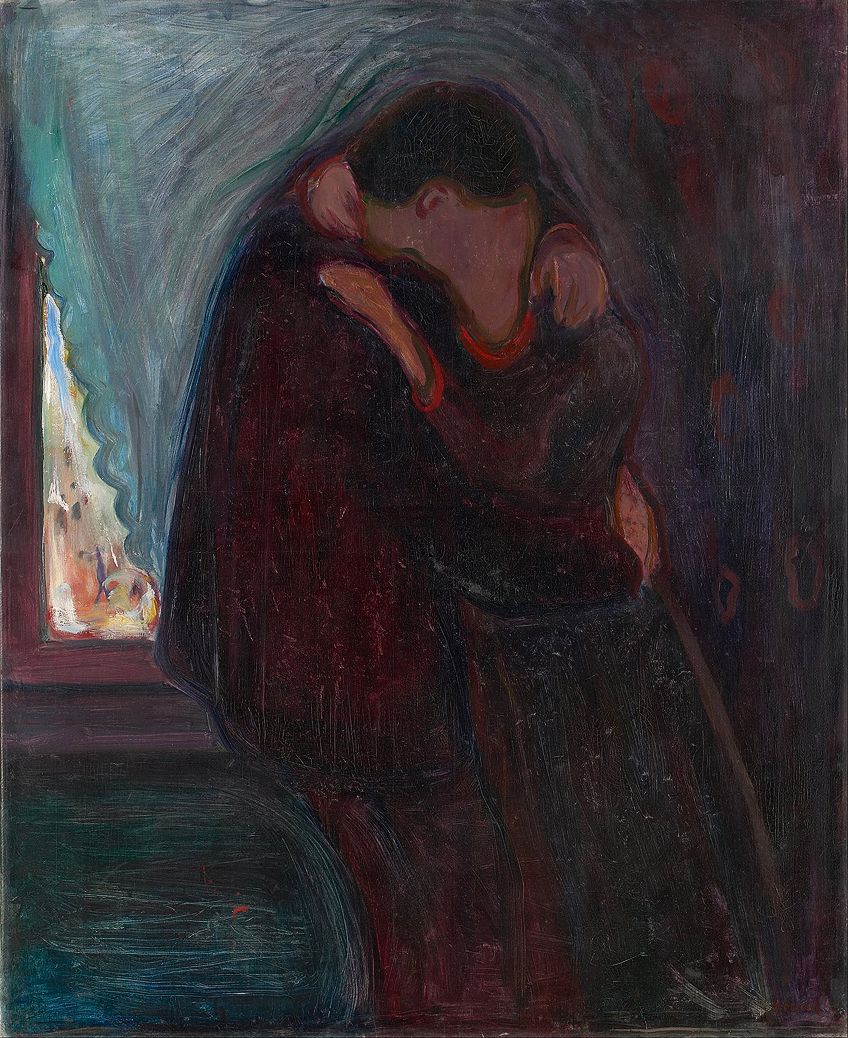
The artwork is similar to Gustav Klimt’s The Kiss. The vivid and dynamic world beyond the glass was a continuous feature in each work, and it was there in the last picture that we all recognize today, whereas the interior depiction of the embracing pair was permanently frozen in place. As we look at the picture, our attention is focused on the pair who are kissing. They seem to be encircled by whirling blackness, with just a single window’s beam of light spotlighting their embrace. We can also observe the canvas’s wide brushstrokes, which give the illusion of whirling faces melting into just one.
Even though this picture is quite amorous in both period and content, there is an undercurrent of gloom and maybe concealment, which is accentuated by the use of shadow in the scene.
Spring Ploughing (1918)
| Dated From | 1918 |
| Painting Dimensions | 84 cm x 109 cm |
| Medium | Oil on Canvas |
| Currently Housed | Munch Museum, Oslo |
Following the years after his hospitalization, Munch gave up his nightlife of revelry and excessive intoxication and dedicated his hours to his work and the surroundings of his hometown. While the artist used to refer to his works as his children, he began to refer to them as his children with nature.
Edvard Munch’s landscape paintings were transformed by this fresh motivation, which came in the shape of agricultural workers, wildlife, and the Norwegian environment, all of which took him on a completely different path, one that celebrated work and life rather than worry and sorrow.
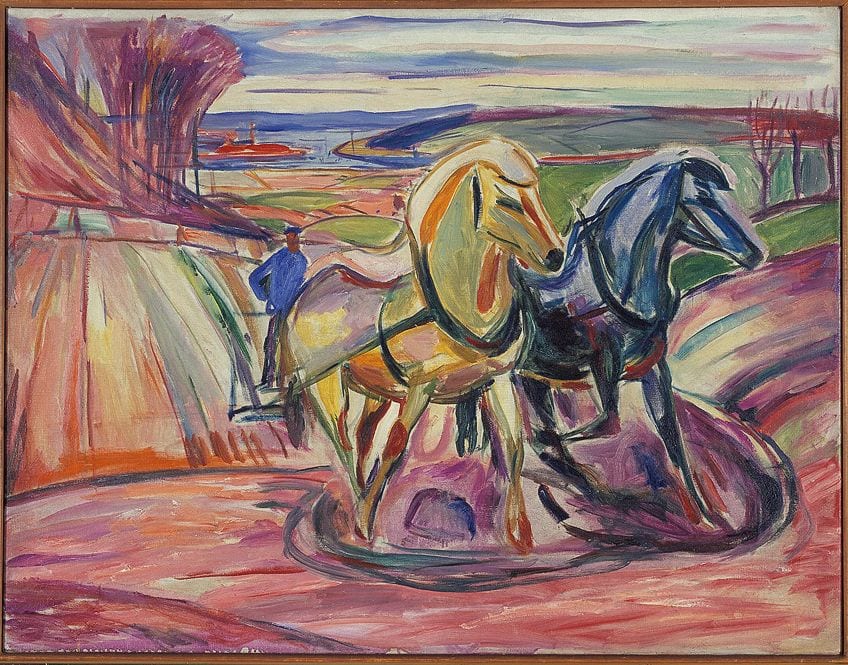
Spring Ploughing shows Munch’s influence on the youthful Franz Marc, whose work in Expressionism was influenced by Munch, and who had a propensity for depicting wildlife in their natural habitats. Munch’s phase of really innovative Expressionist mixed with Symbolist works had gone, as evidenced by similar paintings from the same period and their innocuous subject matter. Nonetheless, the painting’s brushstrokes and colors are mature, indicating the touch of a professional.
As we have seen from this list, Edvard Munch paintings go far beyond just The Scream, Edvard Munch’s most famous work. Although many of his topics revolve around death and anxiety, he later started to create paintings about love and relationships. Edvard Munch’s landscape paintings also moved from a somber tone to lighter material in later years after leaving the hospital.
Frequently Asked Questions
Were All Edvard Munch Paintings Somber and Depressing?
Much of Munch’s youth was a rather gloomy time, with disease and mental illness, and death constantly around him. Many of his paintings revolved around the death of his family members, such as his father and sister. Even when the paintings were not directly about their death, they often featured characters who seemed mentally and emotionally disturbed. However, later in his life, he would veer into other subject matter.
What Else Did Edvard Munch Paint About Except for Death and Anguish?
Although many of his works are rather depressing such as Edvard Munch’s most famous work, The Scream, later in life he explored other topics such as relationships and love. This can be seen in Edvard Munch paintings such as The Kiss. Edvard Munch’s landscape paintings also became lighter in tone, reflecting the surroundings of his homeland, rather than a reflection of the inner turmoil of his figures.
Isabella studied at the University of Cape Town in South Africa and graduated with a Bachelor of Arts majoring in English Literature & Language and Psychology. Throughout her undergraduate years, she took Art History as an additional subject and absolutely loved it. Building on from her art history knowledge that began in high school, art has always been a particular area of fascination for her. From learning about artworks previously unknown to her, or sharpening her existing understanding of specific works, the ability to continue learning within this interesting sphere excites her greatly.
Her focal points of interest in art history encompass profiling specific artists and art movements, as it is these areas where she is able to really dig deep into the rich narrative of the art world. Additionally, she particularly enjoys exploring the different artistic styles of the 20th century, as well as the important impact that female artists have had on the development of art history.
Learn more about Isabella Meyer and the Art in Context Team.
Cite this Article
Isabella, Meyer, “Edvard Munch Paintings – Looking at Edvard Munch’s Most Famous Works.” Art in Context. October 3, 2021. URL: https://artincontext.org/edvard-munch-paintings/
Meyer, I. (2021, 3 October). Edvard Munch Paintings – Looking at Edvard Munch’s Most Famous Works. Art in Context. https://artincontext.org/edvard-munch-paintings/
Meyer, Isabella. “Edvard Munch Paintings – Looking at Edvard Munch’s Most Famous Works.” Art in Context, October 3, 2021. https://artincontext.org/edvard-munch-paintings/.


